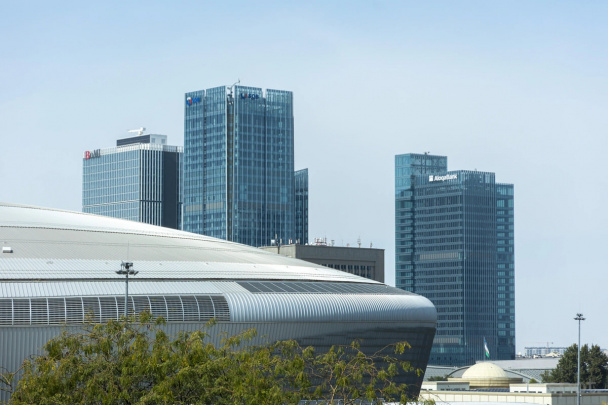EBRD allocates $65 million for Uzbekistan’s first renewable hydrogen plant to cut CO2 emissions
The plant is expected to produce up to 3,000 tons of renewable hydrogen per year after it becomes operational, reducing annual CO2 emissions by approximately 22,000 tons.

The European Bank for Reconstruction and Development (EBRD) will help decarbonize fertilizer production and electricity generation in Uzbekistan by financing pilot renewable hydrogen production facilities, UzNews.uz reports with reference to the EBRD's press service in Uzbekistan.
The project will consist of a 20 MW electrolyzer and a new 52 MW wind power plant.
The EBRD is offering a financial package worth $65 million to ACWA Power UKS Green H2 for the development, design, construction, and operation of the facility. This company is owned by ACWA Power (an international developer, investor, co-owner, and operator of power generation and desalinated water plants) and Uzkimyosanoat (UKS), an integrated corporate structure that unites chemical enterprises in Uzbekistan.
The financing package includes a senior loan of $55 million provided by the EBRD, along with concessional financing of up to $10 million from Canada through the High-Impact Partnership on Climate Action (HIPCA) Special Fund. The EBRD also plans to provide a subordinated equity loan of up to $5.5 million for the project.
"This is the first of its kind project in Central Asia, a region with carbon-intensive industries where emission reductions are difficult to achieve," said Nandita Parshad, EBRD Managing Director for Sustainable Infrastructure.
It is noted that this project will help replace gray hydrogen, produced from natural gas and widely used in the production of ammonia fertilizers in Uzbekistan, with renewable hydrogen. The latter is recognized as a key alternative for decarbonizing the fertilizer production sector.
Once operational, the plant is expected to produce up to 3,000 tons of renewable hydrogen annually, reducing CO2 emissions by approximately 22,000 tons per year.
Related News

16:09 / 02.01.2026
Uzbekistan plans to privatize five state-owned banks by 2030

16:48 / 05.12.2025
Uzbekistan commits to cutting harmful emissions by 50 percent by 2035

14:21 / 01.12.2025
Government rolls out color-coded eco-stickers to classify vehicles by emissions

13:05 / 25.11.2025



